A glimpse of the light and a taste in three days, the story and taste of Chengdu, the land of abundance
order
At the end of summer, we head west to Chongqing and finally enter Sichuan. Tang Xuanzang went to the Western Heaven to learn scriptures, and based on the route I took, he was eating food along the way. Looking back, I am afraid that this behavior will soon catch up with the Second Brother.
After escaping from the clutches of the autumn tigers in Hangzhou, how could Changsha, Wuhan, and Chongqing on the way were all hot stoves and miserable? Looking at the weather forecast for Chengdu, it has been raining continuously in recent days, so I plunged into it like a dehydrated fish returning to the sea. It was so comfortable that I could spit out a string of bubbles. Then I would spend a few days in Chengdu, eating, drinking and having fun in this land of abundance and the capital of delicious food. Isn't it great!
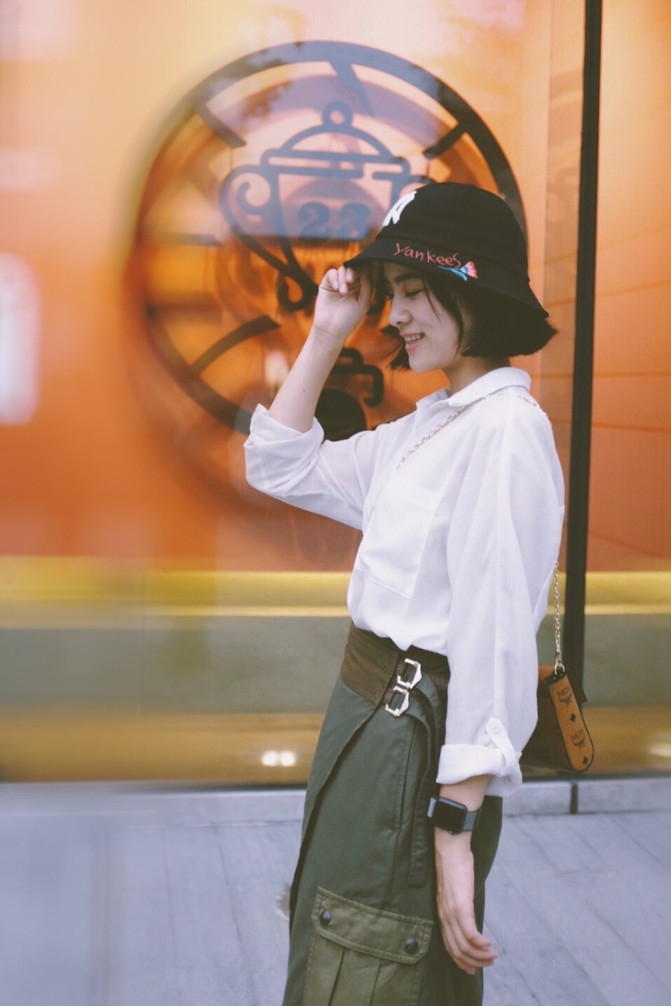
I don't need to say much about the history and scenery of the "Land of Abundance". This ancient city with a history of more than 3,000 years has a profound historical context that continues to extend along Qingshiban Street and Qingyan Long Lane. The years and stories are engraved here. Every detail. Sanxingdui, Jinsha Ruins, Wuhou Temple, and Du Fu Cottage are like nodes in the continuation of civilization, quietly telling the past of this city over the years. And the moving scenery around her,"the windows contain thousands of autumn snow in the Xiling Mountains, and the door is anchored by the ship of Dongwu thousands of miles","The world of Emei is beautiful, the world of Qingcheng is secluded","Paying to the water of Dujiangyan and asking about Qingcheng Mountain", are the most dazzling pearls on her clothes. Ps: Although I have introduced so much, I have been here to Chengdu too many times and I am too lazy to bother about it. This time, I will just take a stroll in the city, eat and have a stroll.

The title of "Capital of Food" is not a nickname given in the market. It is an official title endorsed by UNESCO. In 2004, UNESCO established the global "Creative Cities Network", which is divided into seven fields: Capital of Literature, Capital of Film, Capital of Design, Capital of Music, Capital of Media Art, Capital of Folk Art and Capital of Food. The competition is extremely fierce every year. On February 28, 2010, Chengdu won the crown and became Asia's first world "food capital" and China's third creative city.

The reason why Chengdu can become Asia's first "food capital" is inseparable from the status of Sichuan cuisine. As the epitome of Chinese cuisine, Sichuan cuisine is the most accepted among the eight major cuisines in China. It has opened up a unique spicy Jianghu outside the sweet south and the salty north. Looking around the world, Sichuan restaurants from ancient Eastern countries and their red spicy aroma have long been scattered in every corner of the world. New York, Tokyo, London, Paris, Cairo, Toronto and other international cities you can name, as long as there are Chinese, there must be Sichuan restaurants in places where there are Chinese. Sichuan restaurants in many places even account for 80% of local Chinese restaurants. Currently, the world's most well-known Chinese dishes such as Mapo tofu, fish-flavored shredded pork, and Kung Pao chicken are just home-cooked dishes in Sichuan cuisine.
The most surprising thing is that Chengdu vividly demonstrates the essence of "delicious and inexpensive" food.

itinerary
August 20
Hangzhou-Chengdu (aircraft)
Dinner: Jiyu Thai seafood hot pot
Accommodation: S Modern Hotel
August 21
Lunch: Fisherman Fish
Attractions: Wuhou Temple, Jinli
Dinner: Malatang on the roadside
Take a walk in Riverside Park after dinner
Midnight snack: Deji braised kebabs
Entertainment: Chunxi Road Private Cinema
Accommodation: S Modern Hotel
August 22
Noon: Chengdu diners
Attractions: People's Park, Heming Tea House
Dinner: Oyster Hero
Return home after dinner
DAY1 Time drifts, wandering in the slow life of old Chengdu-Kuanzhai Alley
Although the saliva almost drips to the ground, Chengdu's story should still start with the scenery. The first stop to put down your luggage is the Kuanzhai Alley, Chengdu's most lively, distinctive and well-known neighborhood.
Compared with the Jinli rebuilt in previous years, I prefer the wide and narrow alleys that retain the original flavor, ancient charm and antique scenery.
The predecessor of Kuanzhai Alley was an alley built during the Kangxi Period. It is said that after Kangxi put down the Jungar Rebellion in 1977, Mancheng was built in Chengdu. Kuanzhai Alley was called Xingren Alley at that time, and narrow alley was called Taiping Alley., Jingxiang Alley is Ruyi Alley.

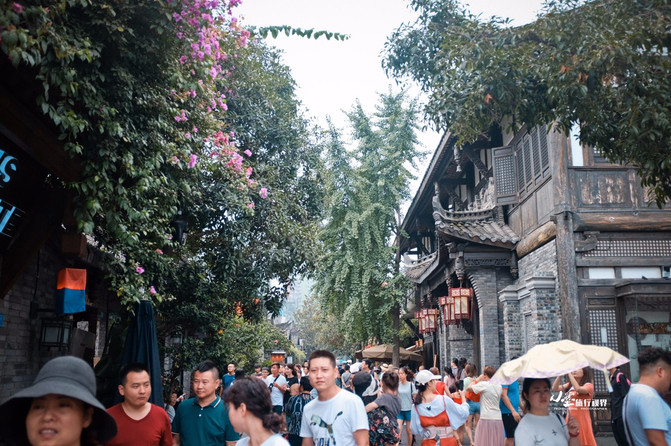
That's right, there are not only wide alleys and narrow alleys here, but also a "well alley" with blue bricks and black tiles and long. Here, it retains the old style of old Chengdu hundreds of years ago.

Walking through the tall and unique archway in the wide and narrow alley, before I officially stepped into the alley, I suddenly found some surprises on the roadside, novel objects that had not appeared before I came last time.


That's right, these sculptures that reproduce the life of old Chengdu are like graffiti on the streets of Penang, Malaysia. Although the objects are not the same, they are all carving the old time.


Interact with the sculpture and take a few group photos, as if painting yourself into the past years of old Chengdu. The feeling of traveling in a trance is full of fun.


Kuan Alley is a nostalgic area in old Chengdu. Most of the buildings here are old buildings in the late Qing Dynasty and early Ming Dynasty, as well as some Western buildings left behind by the church. This is a representative place of "leisure" in old Chengdu, and the Chengdu customs in the past linger here.


The narrow alley is a long alley filled with petty bourgeoisie sentiment. It makes full use of the courtyard culture of the old neighborhood and harmonizes it with bars, restaurants, cafes and art galleries, allowing tourists to rest here and steal half a day's leisure. The "slowness" of life in Chengdu is vividly demonstrated here.


As for wells and alleys, they are a reproduction of old Chengdu's urban life. When the alley is erected, it becomes a well. When the well is leveled, it becomes an alley. The first well alley should have been a well. The deep green bricks are covered with thick green moss, and the bright moon is reflected in the water. As for whether this is a well from the Qin Dynasty or the Han Dynasty, I have no way to study, but if you feel it, think about it, the historical fog behind time is the most interesting.


In addition to the market life of old Chengdu, there are also many literary and creative gift shops and bookstores, antique tea houses and Sichuan cuisine restaurants, colorful popsicles are the brightest colors in summer in the wide and narrow alleys, and emm means that popsicles turn a little fast.


The warm lighting, the oily blurring of the large aperture in the background, and the atmosphere, decorations and products of the art store are the trump cards for artistic or retro portraits. In the narrow and narrow alleys of beautiful literature and art, even an inconspicuous shop on the corner may hide small romantic surprises.


These classic old houses also hide many authentic Sichuan restaurants, tea houses and stage stages, such as the rumored most expensive Sichuan restaurant in Chengdu, and the beautiful B & Bs that are hidden in the city. Of course, there are also a few private houses with signs saying "Don't enter unless invited" hanging at the door. Long corridors and pavilions can be vaguely seen through the half-closed crack of the door, like the houses of officials in costume dramas.



You are looking at the scenery, but you don't know that you have become the most beautiful scenery in the eyes of others. Your inadvertent lowering of your head and looking back becomes the beauty of freezing in the lens.
There is an official through train to major scenic spots in Chengdu at the entrance of Kuanzhai Alley, which allows you to easily and quickly get to other scenic spots.

Seafood, coconut wind and sunshine melt into the aroma of tom yum soup-Jiyu Thai Seafood Hot Pot
Chengdu and Thailand are far away, nearly 2,000 kilometers in a straight line from Bangkok and a latitude difference of 17°. They are not only separated by a three-hour flight, but also separated by language and holidays.
Chengdu and Thailand are very close, so close that I passed through Tai Koo Li and accidentally smelled the familiar flavor of authentic tom yum soup. Citronella, lemon leaves and fresh prawns collide together, mixed with the aroma of coconut. Close your eyes, and the familiar sunshine and sea seem to be within reach.
The last time I came to Chengdu, I hurriedly tasted the delicious fish harvest. However, I had to catch a plane at that time, so I can only say that I swallowed the dates and ate them a little, but I don't know much. This time, I put Jiyu Thai seafood hot pot first and spent the night eating to my heart's content!

Sichuan and Chongqing love hot pot. As one of the two base camps of hot pot, Chengdu is full of fragrant butter soup. For locals who are used to eating old hot pot, if foreign hot pot food wants to stand up here, it is impossible to use a few brushes.
As long as you look through the food rankings, you will find that this is actually the most popular hot pot restaurant in Chengdu's Jianghu. Looking at the dazzling and mouth-watering seafood and desserts, the Five Organs Temple has long been rising.
He specially came out of the wide and narrow alleys early to avoid the bustling queuing army and rushed to the battlefield in advance to occupy the commanding heights. Reasonably arranging the time is a must-have for a competent eater (there is no way to rely on the taste and popularity of his family. There are indeed a lot of people queuing at the meal).

The space inside Jiyu is divided into three floors: upper, middle, lower and lower floors. Although it is located in the Taikoo Li business district, where every inch of land is precious, it is not at all restrained. The entire body is designed with a fully transparent glass room and temperature-controlled lighting specially customized from Germany. It is said that the design inspiration comes from the LOGO upgrade of Art Basel
This is a hot pot restaurant that houses its restaurant in the jungle. In the three-story space, green plants tightly surround the translucent glass room. Being in it is like being in a beautiful fairyland where Alice sleepwalks, and suddenly I feel like traveling through time and space.

The dining space is very spacious, with only a few tables in each area, allowing diners to enjoy their private space without being disturbed by the outside world. The restaurant's lighting installations are unique and are specially customized by the designer for Jiyu. They not only match the overall space, but also complement the light for taking photos.

Speaking of a thousand things, no matter how well the restaurant is designed, it still depends on the dishes. The variety of set meals provided by his family are very complete, and the prices are much more cost-effective than a single order.
The first thing that comes up is an oversized seafood collection. Many people feel that eating seafood in the Great West far from the coast is either stale or too expensive. However, Jiyu breaks this inherent concept. The breathing extra-large abalone, the retractable shrimp feet, and the seafood in his family is as fresh as if it had just been fished out of the sea. The "full beard and full tail" in Beijing dialect is no longer enough here. Now it is "living beard and full tail". What is fresher than "fresh"? Well, it's "vivid"
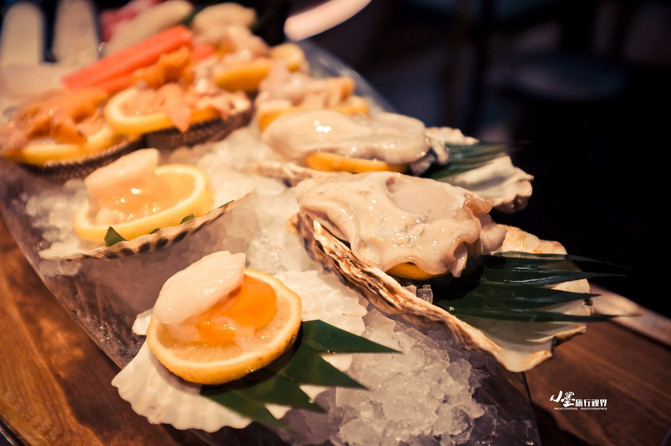



As a Thai hot pot, Jiyu's signature is naturally the pot of tom yum soup, which is a treasure that many foodies will never forget and chase all the way from Kehua Road to Taikoi Store. The color of the bottom of the pot is rich white, which looks like silky milk. When you take a sniff, it has a fresh aroma. The waiter introduced that the soup base is made of crucian carp and old soup.

Then I poured the secret spice package, the fragrant tom yum soup and coconut juice into the pot in turn. After a while, a familiar fragrance floated out. I sniffed it gently, and it was exactly the same as what I smelled in a local Thai restaurant. It was the aroma of citronella, lemon leaves and southern ginger, perfectly highlighted by the coconut juice.

Secondly, his family's dips are very complete, including signature lemon mint, traditional Thai flavor, secret millet spicy, spicy seafood, fresh pepper sesame, peanut butter and Sichuan fragrant dry dishes. No matter what flavor they like, you will be able to find your own one among them.

After the bottom of the pot was boiling, the waiter helped us to heat the abalone and shrimp, and then helped peel them well. After peeling, the shrimp was actually intact. This technique is ten streets ahead of me. The extra-large fresh abalone is very fat, and the shrimp tastes fresh and sweet. Then roll in the traditional Thai sauce. The moment I put it in my mouth, I closed my eyes and felt like I had returned to the streets of Bangkok. Memories and reality intertwined, giving me a graceful feeling.

Then there was the seafood feast. Qingkou, raw oysters, shrimp and fish slides, and all kinds of shellfish took turns. The waiters boiled them just right. The key point was to mention that the service level here was quite good. There were dishes, introductions, and rinses. Very patient, and there were also waiters pushing carts to serve free desserts and drinks. Although it was free, the taste was unambiguous at all. Pudding and yogurt were excellent.

In addition to meals, his family's snacks, drinks and desserts are also worth reading about. I ordered a lemon-mint-flavored drink. The taste was as fresh as the bright sunshine of Southeast Asia. The finale is a variety of desserts from Jiyu, including mellow cream pudding, sago dew, poplar branch nectar, coconut custard, etc. Not only is the taste sweet, but the appearance is also impeccable. It is very suitable for little fairies who like to take photos.



Finally, I went out and took a look. There were free snacks and a mobile phone calling system when queuing. I thought it wouldn't be boring to wait for a waiting list. Moreover, I was in the Taikoi business district, so I could wait for a waiting time. Go shopping.
S Modern Hotel Chunxi Road
Chunxi Road, the busiest and most prosperous area in Chengdu, has various levels of food, accommodation, entertainment and shopping. Therefore, every time I come to Chengdu, I choose to live on Chunxi Road. The rooms at S Modern Hotel are not big, but they are well-equipped and include breakfast. In addition to its good location when booking this hotel, I also like the open-air courtyard on the roof, which is very suitable for taking photos. You can also overlook the lively scene of Chunxi Road, which is a quiet place in the chaos.



Day2
The autumn sky reflects the dim branches, the vicissitudes of the city walls bury ancient stories, the looming mottled light tells the mysterious past, the ancient memories slowly echo on the stone stairs and gradually fade away, and occasionally pedestrians walk leisurely. Walking by, it seems to have entered that forgotten period in a trance. This is a city that can dream even when you smell the wind. Strolling through it, from the prehistoric era to the Spring and Autumn and Warring States Period, from the Han to the Tang Dynasty, the Song, Yuan, and Qing Dynasties, it is like wandering through the ancient river of history by boat. On both sides of the river bank are those who have been lost. Stories and legends.
The next day, I took a nap, got up and had breakfast, walked around Chunxi Road, and headed straight to the hot pot restaurant.


Original Sichuan People's Wharf Culture-Fisherman Fish Cuts
There has always been a debate about Sichuan hot pot and Chongqing hot pot. Where did it originate? Who is more authentic? The public said that the public was right, and the old woman said that the old woman was right. There has been no final conclusion.
Ten years ago, there was an aborted official "hot pot debate" that wanted to unify the origin. Although it ended up missing (I think it died because of leisure), I reviewed the literature in the library and drew several speculations. Most of them were related to the culture of docks, trackers and boatmen. The difference was nothing more than Chongqing, Luzhou or Zigong.
There is no doubt that hot pot originated along the Yangtze River in Sichuan and Chongqing, was loved by trackers and boatmen, and gradually became elegant after its development. As the saying goes, relying on the mountains to eat the mountains and relying on the water to draw water. Since it is the dock culture along the Yangtze River, the things that were first washed were inseparable from the things in the Yangtze River.


Imagine that in those ancient years, busy trackers and boatmen gathered together and boiled cheap ingredients such as blood and sewage with river fresh food in the same pot. In the rising heat, it was one of the few delicious foods in the market. Delicious and joyful.
Nowadays, when hot pot is popular in Sichuan and Chongqing, fish hot pot has always been an enduring theme. If I wanted to experience the dock culture of Sichuan and Sichuan for lunch today, I chose the place on the must-eat list, the Yufu Yuzi Hot Pot Restaurant on Zhimin Road.


In this gourmet capital, every food has its own literary temperament. The interior decoration of the restaurant is very distinctive. It can be seen that this temperament belongs to the docks of Sichuan people and the markets of old Chengdu. Fishing nets, bamboo hats, coir coats, and small boats, although a little old, have a sense of historical vicissitudes and warmth in memories. It is as if you have walked into a small fishing village by the riverside, and the family is hustled around the fireside, friendly and lively.



The bottom of the pot is covered with pebbles, and the outer circumference is designed as a wooden turntable. What does this fish hot pot have to do with pebbles? Don't tell me, the reason why their home is famous for its taste lies in the pebbles.


The waiter spread the fresh fish on the pebbles at the bottom of the pot, and then poured in the boiling hot pot base. The high temperature of 300 ° C of the pebbles will quickly cook the fish, retaining the tender and juicy taste, coupled with the mellow taste of the hot pot, let me instantly fall under this pebble "magic weapon", and pieces of fish slipped into my stomach.
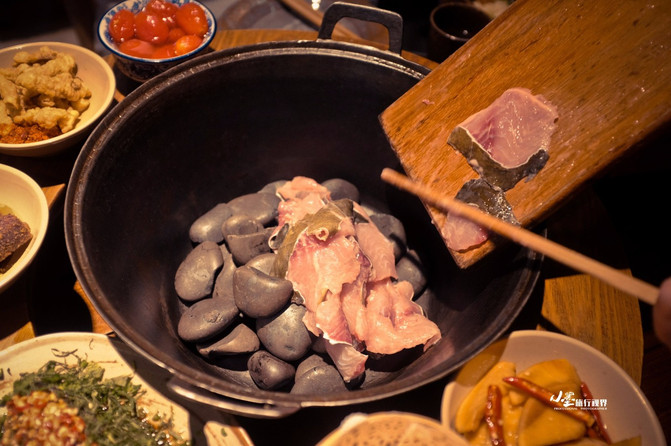


The dipping sauce is also different from the oil dish or dry dish of ordinary Sichuan hot pot. Various seasonings are combined in one bowl and poured into the mellow bottom of the pot to fully stimulate the taste. It is very unique.


There are also many small dishes with the meal, including delicious honey tomatoes, delicious cold crucian carp, crispy purple rice cake, pickles, radishes and cakes that clear the mouth. You don't want to put them down when you pick up your chopsticks. It's a standard foodie.




The drinks made by the restaurant are super durable. After tasting them carefully, the sparkling water has a refreshing and unique taste, which is a perfect match for hot pot.
After eating and drinking, I went to visit Zhuge Kongming in the Wuhou Temple.


Graduation shows the real world. Who can be as good as a teacher for thousands of years? The smoke of the Three Kingdoms Outside Jinguan City-Wuhou Temple
Looking back at the twenty-four histories, one cannot see enough of the prosperity and prosperity of the Han and Tang Dynasties, and the clatter of the Mengyuan Empire. However, what is most difficult to forget is the Three Kingdoms, which are full of fierce generals and advisers.
In fact, there are many famous generals and advisers in other dynasties, but their fame cannot reach the Three Kingdoms. Why is this? There is nothing else but "The Romance of the Three Kingdoms".


Although many stories are fiction, they cannot stop people's love for "The Romance of the Three Kingdoms". Luo Guanzhong wrote the brightest glory of this era, and Zhuge Kongming is the brightest star in this book.
Luo Guanzhong turned the myth of Zhuge Kongming into a plan that was unpredictable and knew the world. He was a transcendent figure who was strategizing. He burned the Red Cliff, fought against scholars with words, borrowed arrows from straw boats, Zhou Yu three times, attacked the Central Plains five times, and captured Meng Huo seven times. Every virtual or real and familiar story can be told by children. Lu Xun commented on him in his "A History of Chinese Novels" as "wise but close to the demon."


In reality, although Zhuge Liang did not have that sacred aura, he was still a great politician, an outstanding strategist, and an excellent writer during the Three Kingdoms period. Zhuge Liang's political talents were not exaggerated in "The Romance of the Three Kingdoms". It was him who "occupied Jingzhou, captured Yizhou, and divided the world into three". He then connected Wu externally and pacified Southern Vietnam internally. He legislated and organized the military brigade. His diplomatic and administrative methods are indeed outstanding. Although Zhuge Liang's military talent is only above average, his literary cultivation is not bad. Do you still remember the "Graduation Table" in the textbook? In addition, he was also an inventor, although most of the things he invented were related to war.



Wuhou Temple is located in Wuhou District, Chengdu. It was built in the park in 233 when Liu Bei's Huiling Mausoleum was built. It was the only temple in China where monarch and minister worshiped together and the most famous memorial site for Zhuge Liang, Liu Bei and the heroes of the Shu and Han Dynasties. It is also the most influential museum of the Three Kingdoms relics in the country and one of the first batch of key cultural relics protection units in my country.


The park is divided into the Three Kingdoms historical relics area, cultural experience area and folk custom area. The folk custom area is the famous Chengdu Jinli. The ruins area consists of three parts: Huiling, Han Zhaolie Temple and Wuhou Temple. Except for Huiling, the existing main buildings of the temple were rebuilt during the Qing and Kangxi years. They are arranged on the center axis of the scenic area facing north and south. They are followed by the gate, Ermen, Han Zhaolie Temple, Guoting, Wuhou Temple, the relocated Sanyi Temple and the newly built Jieyi Building, totaling seven floors. More than 50 statues of Shu Han heroes such as Liu Bei and Zhuge Liang are enshrined in the temple. More than 50 steles are carved from the Tang Dynasty and their descendants, and more than 70 plaques and couplets are carved. The Tang Dynasty is especially famous for the Three Jujue Stele, Qing Dynasty, Heart Attack, and Couplets.


The wind and smoke are clean, and the ages are long, and many romantic past events have turned into a cloud of loess. The leaves are fluttering, as if singing softly through the years. Listen carefully, it is the "Linjiang Immortal".


The rolling Yangtze River passes eastward, and the waves wash away heroes.
Success or failure will turn around.
The green mountains are still there, and the sunset is red several times.
On the white-haired fisherman and woodcutter river, I am accustomed to watching the autumn moon and spring breeze.
A pot of turbid wine is a pleasure to meet.
Many things in ancient and modern times are talked about with laughter.
Next door to the vicissitudes of history is Jinli, a lively scene in the mortal world.
Next door to Wuhou Temple is Jinli Pedestrian Street, which is the B & B cultural area of Wuhou Temple.


Every city has one such alley, which is lively and bustling. The floating smell is the faint smell of fireworks in the ancient city. In Chengdu, this street is called Jinli. Why not just sit in the teahouse and make a pot of tea, observe the various living beings and the market, and watch their joys, sorrows, happiness or loss. In a trance, I actually find a feeling of dust in this noisy red world.


Legend has it that Jinli was once one of the oldest and most commercial streets in the history of Western Shu. It was famous nationwide as early as the Qin, Han and Three Kingdoms periods. Regarding the Wuhou Temple and Jinli, you can find traces of them in ancient poems, such as the poem saint's "Where to Find the Prime Minister's Ancestral Hall? The cypresses outside Jinguan City are dense" and "Looking at the red wet place at dawn, flowers are heavy in Jinguan City." I still remember someone once asked me why Du Fu loved to write about Chengdu so much? That's because... As I said before, he has lived in Chengdu for many years.



The lively Jinli Street is full of snack bars. I still remember the stone I leaned against when I ate pineapple rice in Jinli last time. Unfortunately, I can't see the shop selling three cannons performing and smashing glutinous rice balls. It's a pity that this door is gradually declining. craft.


The antique buildings in Jinli are quite elegant and exquisite. If you come at night, the night view will be more beautiful at that time.



Things in the world are like a dream. After waking up, how much can you hold? In Jinli, what I like most is this lively atmosphere of red dust.

Put this lively red dust into the pot, and what you want at the entrance is a string-Malatang on the roadside
After crawling out of Jinli, I was hungry again after shopping for the whole afternoon. I only drank a glass of fermented glutinous rice inside, so I had to take a taxi back to Zhimin Road.
Why did you return to the road to the people? Although this colorful road next to Jiuyan Bridge is a little deserted, it is full of the feeling of an old Chengdu community. Although it is not as famous as Yulin Road and Xianghe Li, it is an out-and-out food street.
The history of this street can be traced back to the Republic of China period, during the eight-year War of Resistance, which was 1938.
After the fall of Nanjing, the Chinese people had just woken up from this blow. Some joined the army and some avoided disaster overseas. However, Chairman Jiang, who had vowed to live and die with Nanjing, had already gone to Chongqing and cooked hot pot.
Ordinary people cannot escape overseas. They can only flee to the rear with their families. Yunnan, Guizhou, and Sichuan have become ideal shelters. A large number of refugees poured into Chengdu, leaving the ancient Chengdu city in chaos. In order to relieve the pressure, the authorities opened a rejuvenation gate along the river, building a road to the people with the meaning of "reaching the people by governing".
Over the past few decades, this old street has declined and flourished. It has finally become an inconspicuous old neighborhood. It has gradually grown old in Chengdu's lost years and few people have paid attention to it.

I don't know when it started, but this road suddenly became a new food street. It became popular overnight, and local gluttons came in droves. Looking for Chengdu cuisine, if you haven't been to the few shops Zhimin passes by, you will probably be despised.
Having said all that, the restaurant for dinner is a popular skewers in the style of a traditional old Chengdu fly restaurant-Roadside Malatang. I have been here a few times before, and in the blink of an eye, branches have opened all over the country and can be found at the doorstep of Hangzhou.


Although there is a branch at your doorstep, the taste is still delicious here. Chuanxiang is a traditional food in Sichuan. Like hot pot, it is a representative of grassroots food culture and another form of hot pot. Malatang and small hot pot often eaten by foreigners are variants of Chuanxiang.


In fact, it is much more cost-effective to talk about skewers than hot pot. After all, the pot bottom and ingredients are free. The selection process is similar to the Malatang in the north, but a skewer only costs a few cents. In other words, you can spend half the price for hot pot. Taste several times the dishes.
As one of the most popular restaurants on Zhimin Road, the small bench waiting outside the restaurant is filled with diners as soon as possible. Looking around, everyone is filled with foodies who love it deeply.


The interior decoration of the store is mainly in the style of the 1980s and 1990s, with hopscotch, rubber band jumping, and sandbags throwing. The murals depict many common childhood memories born in the 1980s and 1990s. Being there seemed to have the illusion of traveling through time and space. The old man on the street seemed to be selling popsicles that cost 5 cents a piece. For a moment, his vision became blurred, and there was a lot of smoke in his heart.



The waiter prepared a dipping combination of chopped peanuts + sesame oil + mashed garlic for us. The freezer with strings was not far ahead. Diners could pick their own dishes with bamboo baskets, regardless of meat and vegetables, they would be 50 cents. There are many types of dishes. Meat and vegetables are each stuffed into a large freezer. You don't have to worry about whether you have enough to eat or whether it will be wasted if you order something you don't like. It's the nature of eating if you want to do whatever you want.



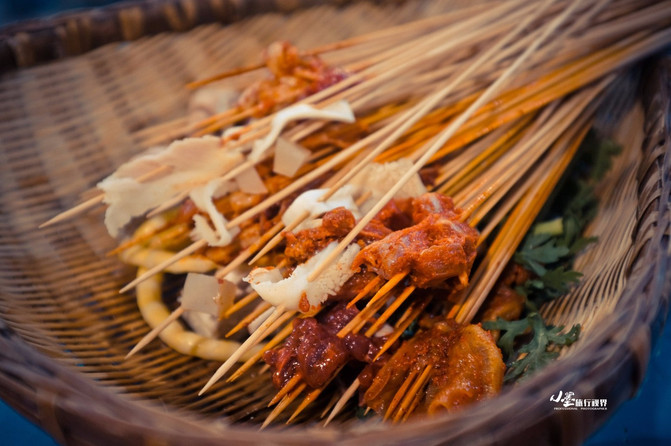
In addition, there are also special dishes such as beef, rabbit loin, steamed potatoes, steamed brain flowers, brown sugar glutinous rice cake, spicy Basha fish, etc. The simple porcelain bowl is paired with a bottle of Arctic Ocean, making the feeling of travel even stronger.

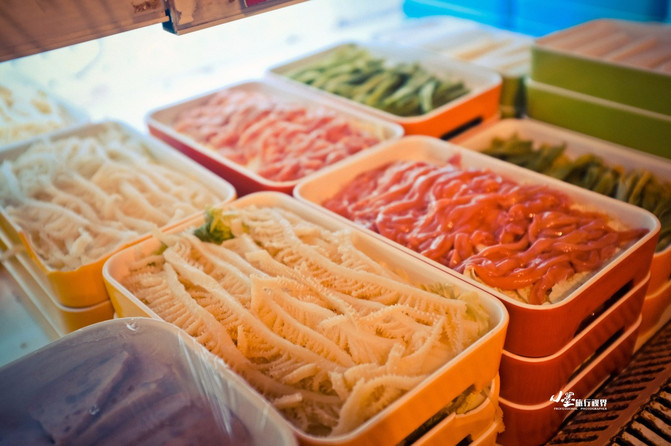
The spiciousness of skewers is just one level lighter than hot pot. Diners who cannot eat spicy food will take a try first to heat up the hot pot in advance.


When I entered the door, I always felt that the bar was so familiar that I couldn't tell it. I looked back casually and saw that wasn't the window of the canteen when I was a child. In a trance, I felt as if I was grasped by an invisible hand. I couldn't say anything for a long time, but I couldn't go back to my childhood.

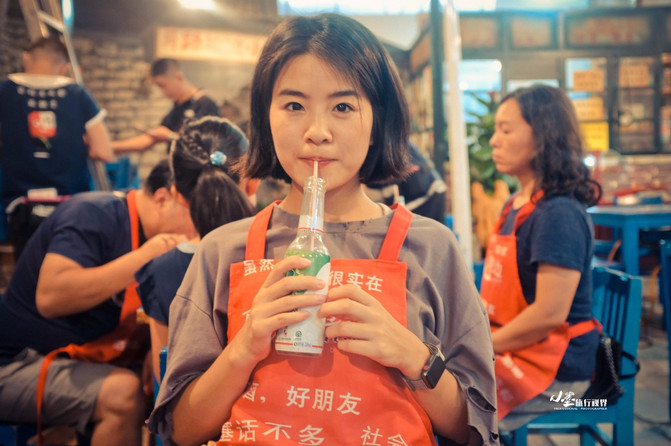

With Wangjianglou Park and Xue Tao's Tomb
Thousands of layers of Yunfeng Wanqing Lake, Bai Bo went around Jingwu-Jiangbin to eat digestion, and met Wangjianglou Park and Xue Tao's tomb.
After dinner, I digested my food and moved forward along Zhimin Road. After crossing the Jiuyan Bridge, I turned around and unknowingly reached the small road by the river bank.

The river is surging but a little muddy. It seems that the rainfall in the upper reaches has been quite abundant recently. After walking for a while, Rabbit asked me what the name of this river was. I told her it was called Jinjiang. Looking up, it was Wangjianglou Park.

The earliest age of Wangjianglou Park is unknown. We only know that it was established in the Ming and Qing Dynasties to commemorate Xue Tao, one of the four great female poets of the Tang Dynasty. The "Xue Tao Paper" invented by Xue Tao is famous for later generations. Isn't it the exquisite little paper paper that girls love most nowadays? It turns out that this is the root of romance.

Xue Tao had interactions with famous poets Yuan Zhen, Bai Juyi, Zhang Ji, Wang Jian, Liu Yuxi, Du Mu, Zhang Hu and others, and many moving poems have been passed down. These colorful Xue Tao notes are used to write poems. Wang Jian's poem "Sending School Books to Xue Tao in Sichuan" once praised: "Women's school books are written by the Wanli Bridge, and they live behind closed doors among loquat flowers. How much do you know? It's not as good as managing and leading the spring breeze."

The falling smoke shines, dissipating how much prosperity is like a dream. The river is surging, and it has flowed like a song for many years. Wangjiang upstairs Wangjiang River, the legends of the past have gradually faded away with the river, leaving only one Xue Tao tomb for future generations to pay homage.
Summer and night are the best match for barbecue and beer-Dejung Suan Kebabs
After watching the recent popular "Nezha" in the movie theater, I was actually a little hungry again when I came out. As expected, a glutton's appetite can never be underestimated. Calculating the time, it's midnight snack time. Is there anything more enjoyable than a beer barbecue on a summer night?
Opening the rankings, there is a barbecue restaurant that has been on the must-eat list all year round at the Acorn Lane Food Court on Oak Grove Road. It's great, well, beer is great for barbecues.




After traveling in the Jianghu for many years, I have often heard such a rumor: "There is nothing in the world that cannot be solved with a barbecue." If there is, then two meals."

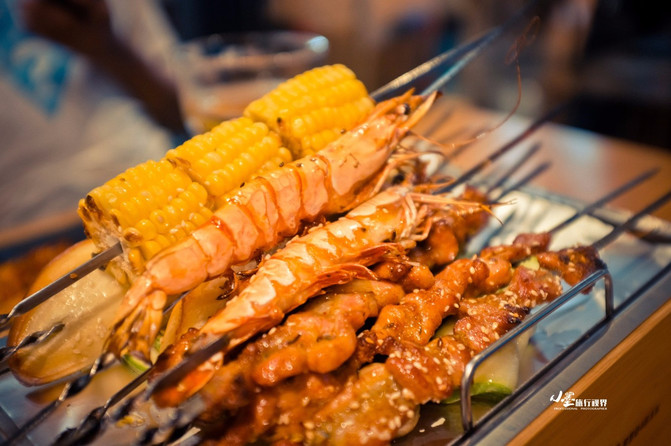
Not long ago, the second season of "A String of Life" hit the circle of friends, harvesting a lot of saliva from foodies in the middle of the night, and everyone experienced a "cloud string" on the screen. As the video says, life is a lonely journey without fireworks.

Barbecue has become the most primitive cooking method since the time when humans drilled wood to make fire. With thousands of years of inheritance and innovation, the excavation of various ingredients and the use of spices, this primitive and ancient cooking has not only not been outdated, but has become a favorite for many eating snacks.


Different from the barbecues in Chongqing where they are roasted and then served on the table, and different from the Xichang brauen barbecues, the barbecues here are more similar to the barbecues in the north-fragrant barbecues are hung on bamboo sticks, and then dipped on the Sichuan-style chili dishes look mouth-watering.


The top is Yanwei Online's Douyin Chicken Feet, the Internet Celebrity Plus model among the chicken feet, and the refreshing and chewy boneless chicken feet. With a sweet and sour taste, the appetite is full.

After taking a few skewers of black pepper beef belly strips that were actually sizzling and oily, he took a few large gulps, and instantly felt as if he felt solid. The beef is made of high-quality Xinjiang beef. The belly strips are the milk part of the cow's belly, with a little beef tendon. They taste tender, smooth, strong, and have a very comfortable taste. Sure enough, he really has some skills to stand out in this delicious city of Chengdu.


Here comes another Plus version of the delicacy-Argentinian red shrimp. The waiter carefully helped peel the skin. The taste of the delicate Q-bomb is really unforgettable. For people who love eating shrimp, there is really no reason to refuse.

In the eyes of northerners, steamed bun slices are probably a must-order delicacy for every barbecue meal. Their unique trick for roasting steamed bun slices is to match them with condensed milk. They are crispy and delicious, and have a full milky flavor!

Most of the potatoes, cucumbers and corn have been eaten by rabbits. Now they are vegetarian animals... Fortunately, I am satisfied with having barbecues and beer. They have a wide variety of beers, including all kinds of domestic imported craft brews. I love the most. I still have oversized Budweiser and Fujia draft beers, hey Bashi.

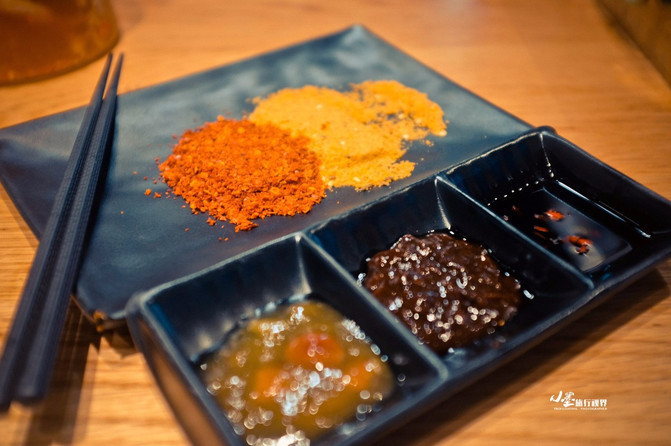
Day3 Top Master of Spicy Jianghu-Chengdu Diner
On the third day, I slept until I woke up naturally. When I opened my eyes, it was almost lunchtime. After washing up, we returned to Zhimin Road, with the aura of eating and clothing this street.
As one of the most popular restaurants in Chengdu, no matter which food list is opened, Chengdu's customers are the one that cannot avoid. Chengdu, one of the two bases of Sichuan cuisine, is different from the unrestrained nature of Chongqing's Jianghu cuisine. Chengdu chefs have always been famous for their rigour. A simple piece of ordinary twice-cooked pork can write a book on ingredients, cutting techniques, heat and other aspects.

As Chengdu diners, who rank first on the Chengdu Sichuan Cuisine Hot List, they focus on retaining the essence of Sichuan cuisine and integrating the strengths of various major cuisines. They not only retain the characteristics of spicy, delicious and fragrant, but also absorb the cooking techniques of other cuisines. The dishes are full of color, aroma and taste, which makes diners feel excited.
The Chengdu restaurant in Kuixing Building has become a frequent destination for many gourmets. This shop on Zhimin Road has been open for some time. It is popular. There will be a long queue every time you arrive at the restaurant, which shows that the customers are in the food circle. influence. The interior space gathers Chengdu's scenery-Kuanzhai Alley, Chunxi Road, Jiuyan Bridge, Wangping Street, Heming Tea House. The exquisite and elegant decoration layout contains the cultural heritage of old Chengdu.


No matter how good the decoration is, the taste is the key. Then order one of his family's signature dishes. Most of the dishes are bright red and look quite tempting. You can smell the aroma of peppers through the pictures.
The appetizer is sweet-scented osmanthus stuffed tomato, which is sweet and sour, not greasy, and the taste is quite amazing.

Then they were presented with free sour soup fish and specialty grilled fish slices, which were popular items in their family. I saw fresh and tender fish slices wearing bamboo sticks, oh, not bamboo sticks, soaked in the fragrant red soup, fully wrapping the aroma and spicy in the soup. Pick up a string and put it in your mouth. Suddenly, the spicy and delicious aroma exploded on the tip of your tongue at the same time, combining with the tender and less prickly fish meat, and the taste was mesmerized.


If you think it's too spicy, you can drink a sip of sour fish soup to calm down. The sour fish soup is very greasy when paired with delicious tofu. The second dish of Tuotuo shrimp was served again before the fish slices were satisfied. The shrimp shells had been peeled off and the whole shrimp meat was immersed in spicy oil. The taste was tender and tender, the shrimp tail was crisp and crisp, and the taste was very unique.


The most unique shape is the sugar-oil fruit. The golden fruit is strung in the air by branches, like a money-making tree that attracts money.
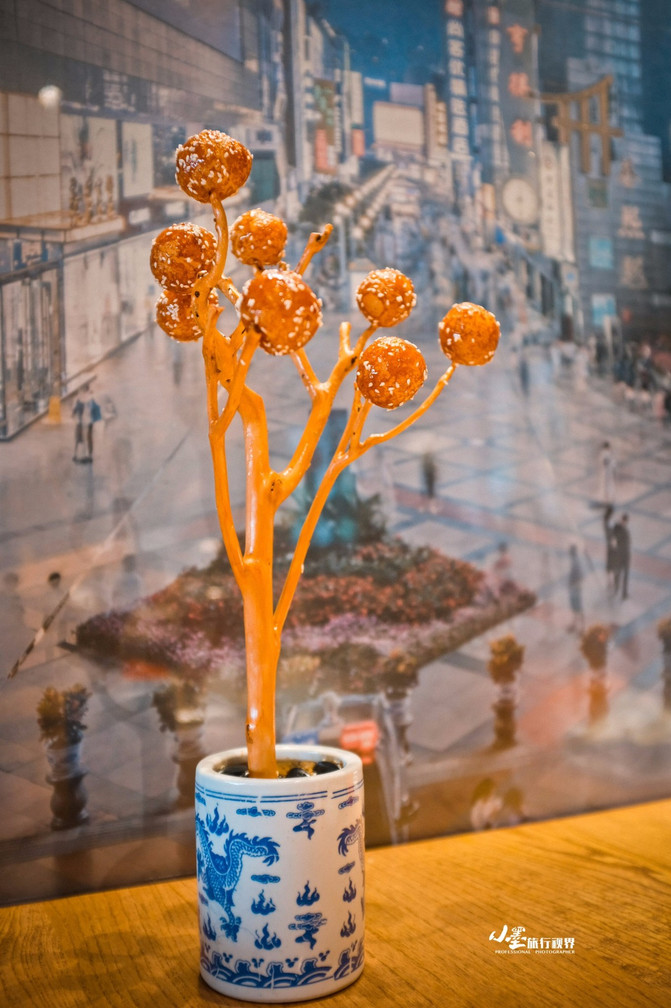

What is worthy of praise is the boiled beef with mandarin duck. One beef has two flavors. The spicy taste of the red soup and the aroma of the rattan pepper are perfect. As the saying goes, boiled water in the Three Kingdoms is boiled with pickled pepper. In the world of Sichuan cuisine, boiled water and beef have always been a perfect match.


For friends in the Sichuan and Chongqing lakes, this rice must not be missed. The familiar potato bacon, sausage, beans and rice, after a bowl, you will feel like you have returned to childhood.


It is rare that no dish in an Internet celebrity restaurant is trampled on, and the service attitude is also very enthusiastic and patient, unlike many popular restaurant waiters who always ignore it.


A cup of tea, half a day of life-Heming Tea House
A century-old cup of tea in Chengdu will give you half a day of leisure. It is well known that Sichuan people love to eat tea. Different from Fujian and Cantonese people who eat tea, a purple clay pot makes the soup moist and fresh leaves, and it will be soaked for a long time without deteriorating. People in Jiangsu and Zhejiang prefer green tea. They prefer to use transparent glasses to observe the color of the soup and appreciate the shape of the leaves. The tea leaves fluctuate like life. Sichuan people prefer scented tea, calling it fragrant slices. Take a bowl and pour water into the copper pot. The flowers float and the leaves sway gently. The leisure and relaxation of Sichuan people are all in this "bubble".


Chengdu is not the same. In addition to the story of old Chengdu people and third-level jasmine tea, they also love to drink bamboo leaves green.
"Bamboo Leaf Green" is not a poisonous snake or a traditional famous wine here, but green tea produced from the famous mountain Emei in central Sichuan. Famous mountains are full of aura. Emei Mountain tea has been a treasure among teas since ancient times. Emei Snow Tea, one of the "Ten Famous Teas" in the Tang Dynasty, was once accepted as a royal tribute tea, and another tea, Emei Snow Sprouts, was hidden in the mountains as a gift from an eminent monk to his fellow disciples. In addition, famous teas such as Bitan Snow Snow, Emei Emei's E, Mengding Manna, Bamboo Leaf Green and other famous teas are also produced in Emei.
The bamboo leaf green produced in Wannian Temple in Mount Emei is named after Marshal Chen Yi. It was originally a variety enjoyed by monks, but later became famous all over the world and became a treasure of Chengdu people. The reason is probably that green bamboo leaves look like bamboo leaves stand upright in the water. Its elegant and agile spirit and free temperament that moves with the waves are very consistent with the temperament of Chengdu people.

"Let's go to the tea shop!" With a shout, the doors of a series of tea shops on the street had already been lowered. The old tea customers slowly walked to the tea shop they frequented and sat in their fixed positions. The waiter held a copper kettle polished by time in one hand and a dozen tea bowls in the other, and quickly placed the tea boat in front of the tea guests. Then set up the lid bowl with the tea leaves on the tea boat, lift the lid with your left hand, press and lift with your right hand, and the flow falls straight down to the bottom of the bowl, and then buckle the lid on the bowl. The whole set of martial arts was completed in one go, and all that was left was to wait for the tea leaves to slowly stretch in the bowl.

Tea is an indispensable daily need for Chengdu people, and it is impossible to determine which dynasty or generation the teahouse originated from. However, when it comes to the most famous teahouse in old Chengdu, Heming Tea House naturally does its part.


In my memories, as long as the sun comes out, old people and old women will come here. Small square tables, bamboo chairs and three-talent bowls (the cover is the sky, the support is the ground, and the bowl is the person, which is called three-talent), three-flower tea is soaked in the Longmen Array and set up. People of different classes and levels are set up in different Longmen Array, national affairs, historical circumstances, family shortcomings, love and hatred, lively but far away from the hustle and bustle, making people extremely relaxed.


People who work strolled over on the way and met with three or five friends, served a few tea cups, Allegro, played monkeys and listened to operas. Occasionally, some people picked their ears, polished shoes, and fortune-telling and read their faces. Everyone enjoyed themselves and enjoyed themselves very well.
The stele outside the door is also engraved with the interesting story of the "Six-Latin War". At that time, the People's Park was called Shaocheng Park. People's teachers in the old society had neither social status nor good treatment, but it was not easy to find a teacher's position to make a living. Every summer vacation and winter vacation in June and twelfth lunar month, if you do not compete for an appointment letter for the next semester, it means you are unemployed. One is to obtain the position of a teacher based on true talents, but the more important thing is to seek various connections, relatives and friends, and classmates from all walks of life. There are too many teachers who have poured into Chengdu due to the war. For a long time, it has been the norm that there are too many teachers and there are too few students.

Heming Tea House was the place for school recruitment and teacher recruitment at that time. Principals who hired excellent teachers, teachers who had only obtained a living for even four months, and brokers who earned commissions, gathered here to wait for the best price. Fighting openly and secretly was like a fierce "war" without any smoke of smoke.

Decades have passed, and the people and events of the past have long been turned into silhouettes in dark yellow photos, but the flavor of old Chengdu has been perfectly preserved in Heming Tea House, like branches in the passing years, silent in the ancient times., silent in those silent, deep or majestic relics, the story is like every look back in history, slow and persistent.

In the Jianghu, there was a barbecue battle with oysters-Oyster Hero
The Jianghu of Sichuan and Chongqing also has a name in history-Paoge, also known as Ge Lao Hui. During the Republic of China, it was one of the three major non-governmental gang organizations alongside the Qing Gang and Hongmen. It had a profound impact on all levels of Sichuan society at that time and left many traces in history. At that time, Sichuan warlords basically all participated in or were named in the Ge Lao Hui. Among them were Liu Xiang, Liu Wenhui, Deng Xihou, etc., all of whom were army generals of the Kuomintang government, not to mention He Long and Liu Bocheng who participated in the pre-revolutionary peak and Xiong Kewu, member of the Standing Committee of the National People's Congress after the founding of the People's Congress.
In the gourmet world of Chengdu, where mountains are lined with mountains, a famous hero-Oyster Hero has emerged in recent years.
On the way from Tai Koo Li to Zhimin Road, you can see this hero as soon as you look up. Liangshan Hero and Oyster Hero stand side by side, but they are not in the same restaurant. They are neighbors across the door.

This is also a popular Internet celebrity restaurant. It has a spacious dining area, neat tables and chairs, a transparent kitchen that is clear at a glance, and a clean and tidy kitchen environment. Only by looking at it with peace of mind can you eat with peace of mind.
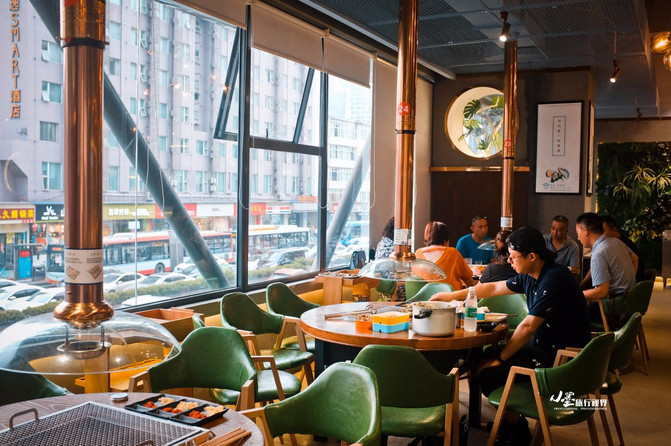

Since it is called Oyster Hero, the main product in the store is naturally a big, plump, tender and juicy oyster. These days, the price of inland oysters is rising year by year. The price of this cafeteria is 96 yuan per person, which is considered a conscience of the industry.

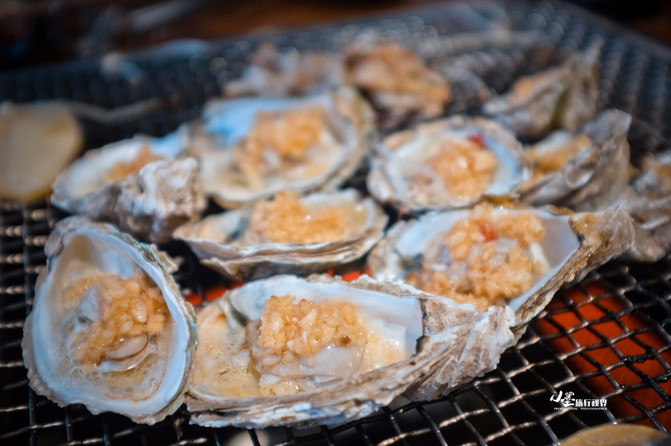
There are two ways to eat oysters here. The first is roasted oysters with garlic. Personally, I feel that this is the most delicious way to eat raw oysters. Fresh raw oysters are served with minced garlic, and the roasted soup is also very delicious, and you don't want to waste every drop. There is also one way to steam raw oysters. The pot of raw oysters is served directly to the table by the waiter, peeled them off with a tool, dipped in the seasoning you match and swallowed them straight into your stomach. The unlimited supply is really satisfying.
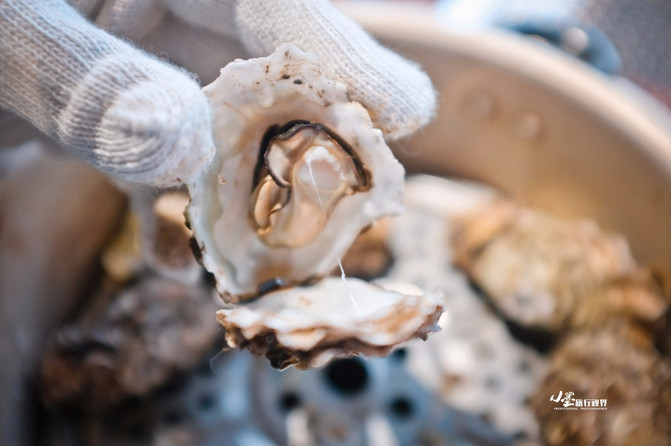
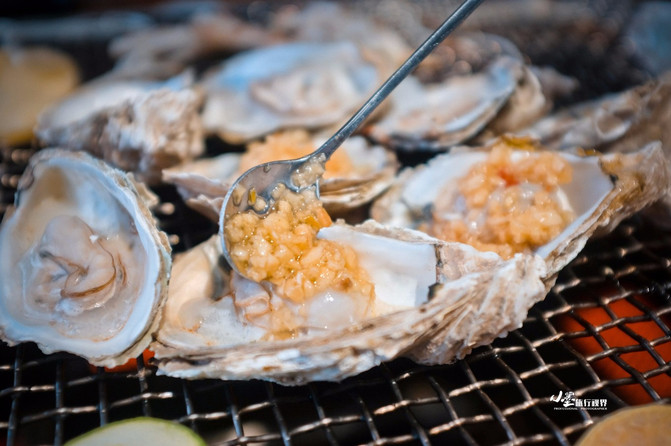
In addition, there is a dazzling array of seafood, barbecues, vegetables and fruits, seafood porridge, wine dumplings and various snacks. Putting aside the signature oysters, it is also very qualified as a cafeteria.



It is worth mentioning that their home's exhaust system is very excellent, and they don't have any smell of soot after eating it.
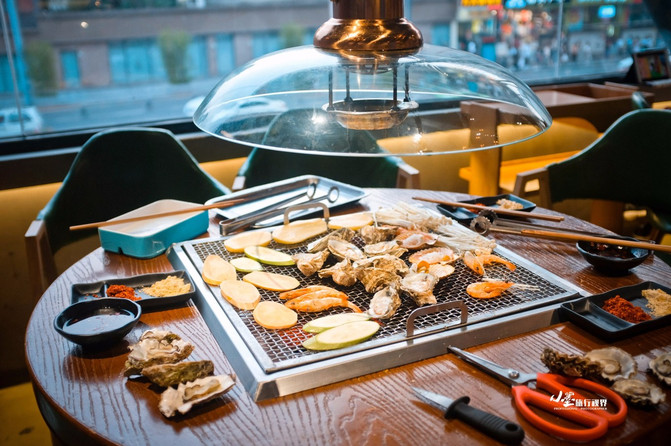

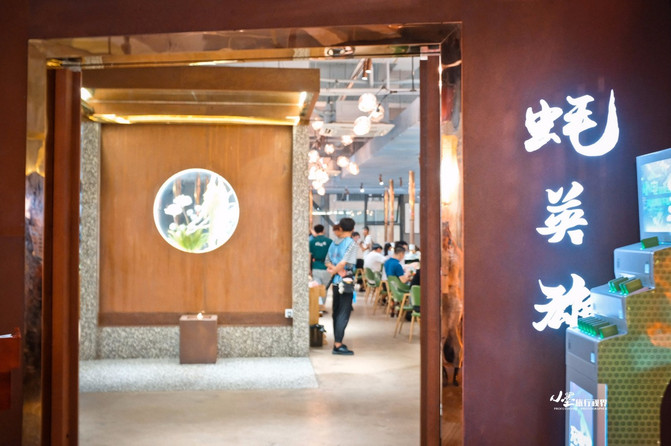
Concluding remarks:
On the bank of Huanhua River, I can't wait for the night rain in Bashan Mountain. Take a walk, expect a journey, and look back. Although Chengdu is a big city, it has the ease and leisure of a small city. Perhaps just as Zhao Lei sang in the song, this feeling is very subtle but just right.
Previous Article:Roaming Chengdu, delicious food in Shucheng, Bashi! Comfort!
Next Article:Come with me to the museum in Chengdu (4 days and 3 nights check-in tips for Chengdu Museum)
